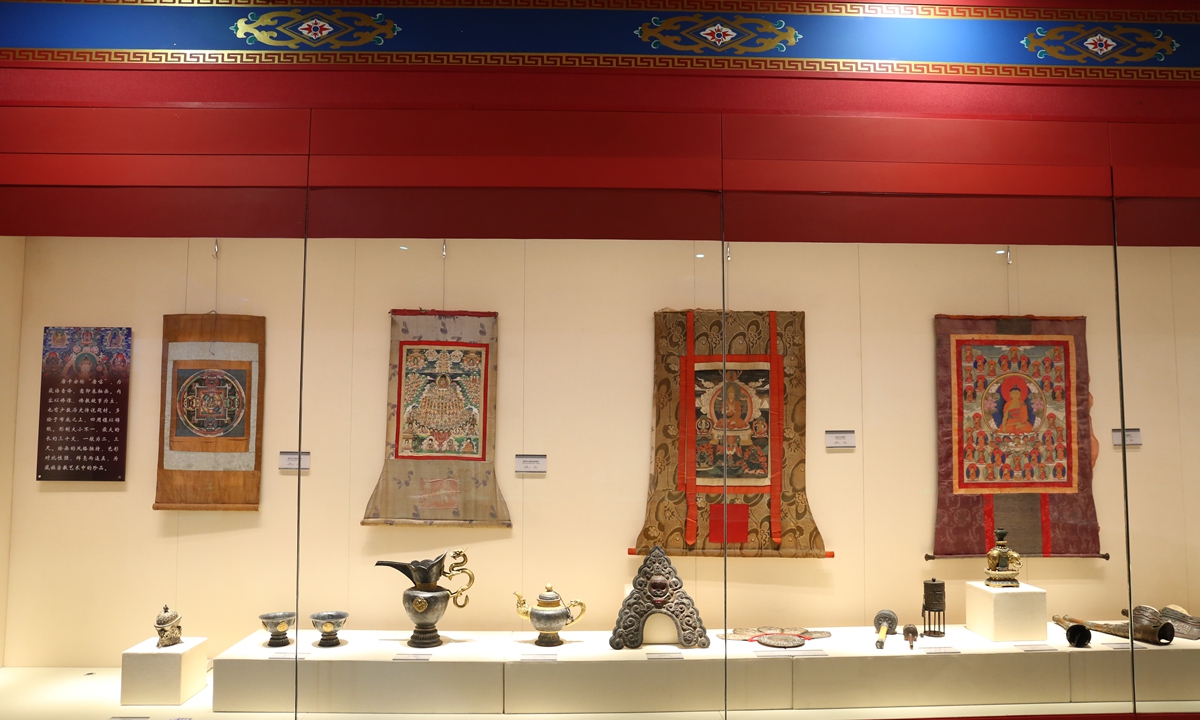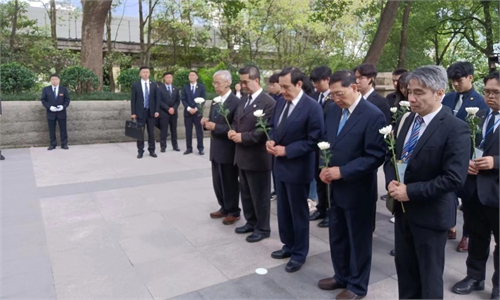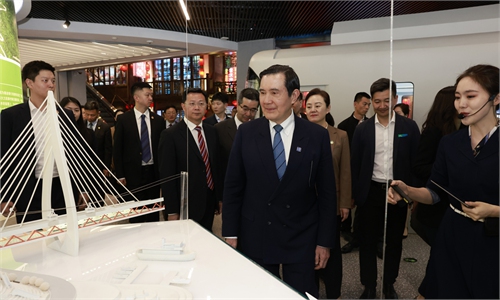ARTS / CULTURE & LEISURE
Chongqing Museum shines as a cross-Straits cultural exchange base
A united family

The Chongqing Museum, also known as the Chongqing China Three Gorges Museum Photo: VCG
Former chairman of the Nationalist Party of China Ma Ying-jeou's visit to the Chongqing China Three Gorges Museum (Chongqing Museum) in Southwest China's Chongqing Municipality on Monday made a deep impression on him.
"Many parents in that era expected their children to build dams in the Three Gorges, that included me as well," Ma said after a tour guide introduced The Marvelous Three Gorges exhibition during his visit, during which he also explored the Ancient Bayu permanent exhibition hall to learn about the music and dances, burial culture and lives of the ancient Ba people.
He looked at the precious cultural relics with such rapt attention that his head even touched the glass protecting the exhibits. What charm does the Chongqing Museum possess that enraptured Ma so?

An ancient edged weapon on display at the museum Photo: VCG
Unique culture of the Three Gorges
The Marvelous Three Gorges exhibition is divided into four sections: The Gifted Three Gorges, Between Mountains and Waters, Miracle of the Three Gorges and Eternal Three Gorges.
The Gifted Three Gorges introduces the unique topographic and landscaping features of the Three Gorges, which were created through billions of years of marine and continental deposits, as well as plate motions happened in Indochina and Himalayan regions.
The second unit tells the story of the people of the Three Gorges, who created a unique culture in this special natural environment.
The main content includes the homes of the people of the Three Gorges, who made use of local materials to adapt their architecture to local conditions and create a harmonious relationship between the people and the land.
Miracle of the Three Gorges is about the gorgeous history and culture of the Three Gorges, myths and legends, and the magnificent poems about the region that have been passed down through the ages.
The main content includes the story of the Three Kingdoms and local Taoist and shaman culture.
One highlight is the Partial General's Seal, which is believed to date back to the Eastern Han Dynasty (25-220).
The seal is a turtle button square gold seal 2 centimeters high, 2.4 centimeters wide and weighs 108.95 grams.
Gold seals were very popular during the Han and Jin dynasties (206BC-420) and 26 seals like this have been found around the country so far.
Fifteen of these were made during the Han Dynasty, making them very precious.
The last unit tells the story of the magnificent Three Gorges project and the spirit of Three Gorges immigrants.
This section boasts the first panoramic digital seamless cinema in China, which can better preserve and show the original appearance of the Three Gorges before the reservoir was built.

Exhibits on display at the Chongqing Museum Photo: VCG
Ancient civilization of Bayu
The Ancient Bayu section focuses on Chongqing's ancient civilization and traces the roots of this culture with artifacts from the Old Stone Age and Bronze Age collections.
Many Paleolithic sites have been unearthed in the area of Bayu, with the age ranging from the early to late Old Stone Age, showing a very complete picture of human development.
A rare treasure in the world, the Bayu region is one of the important areas for the study of early human activity.
The Ba people were heavily influenced by the Chu culture, and some unearthed cultural relics from Ba burial sites were almost identical to those found in Chu burial sites in Central China's Hubei Province, according to the introduction of the exhibition.
Zhu Xinmin, a historian in Hubei who studies the Ba and Chu cultures, told the Global Times that Ba culture is important in Chinese history as it shows the "diversity of ancient regional culture."
Zhu explained that the Ba culture developed a "complete humanistic system" that included not only cultural inventions such as a written language, rituals and beliefs, but also art.
"We often describe people from Chongqing a having bold and straightforward personalities. This was actually inherited from the ancient Ba people's belief in being loyal, trustworthy, bold and also generous," Zhu noted.
Zhu told the Global Times that over the centuries the Ba culture kept its unique regional cultural features, but showed a "gradual convergence" with the culture of the Central Plains.
"Along with other ancient regional cultures such as the Chu culture from Hubei Province, the Ba culture is an example to show the diversity amid unity in Chinese civilization," Zhu noted.


